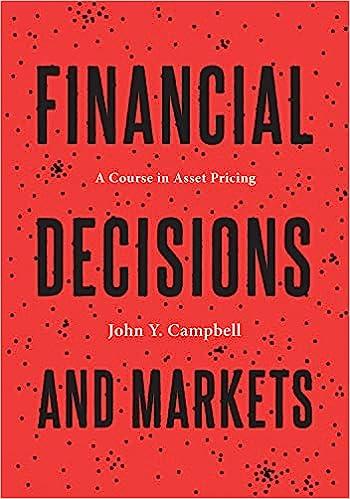(a) Consider a cross-sectional regression of stock returns onto a constant (normalized to unity). Show that the...
Question:
(a) Consider a cross-sectional regression of stock returns onto a constant (normalized to unity). Show that the regression coefficient is the return on a portfolio. What portfolio?
(b) Suppose that, for each stock, we have a measure of the stock's historical beta with the market. We run a cross-sectional regression of returns onto a constant and historical betas. Show that both the intercept and the slope coefficient are the returns on portfolios. Characterize each of these portfolios by stating the sum of the portfolio weights and the historical beta of the portfolio with the market. Relate the two portfolios to the portfolio from part (a).
(c) Assume that the CAPM holds conditionally and that true betas with the market are constant over time. What should the average excess return (over the riskfree rate) on the intercept portfolio from part
(b) be? How could we calculate its standard error following the Fama-MacBeth approach?
(d) Suppose that we find historical average excess returns on the intercept portfolio to be significantly higher than the answer to part (c).
(i) If true betas with the market vary over time, would this constitute evidence against the conditional CAPM? Explain.
(ii) Suppose that we are confident in our measure of historical betas as a good proxy for current and future betas and interpret the finding above as evidence against the CAPM. We would like to start a quantitative hedge fund to exploit this mispricing, but a potential client objects that our profits will be eaten up by transactions costs. Explain why this objection may be reasonable and how we could adapt our trading strategy to address this concern.
Step by Step Answer:

Financial Decisions And Markets A Course In Asset Pricing
ISBN: 9780691160801
1st Edition
Authors: John Y. Campbell





